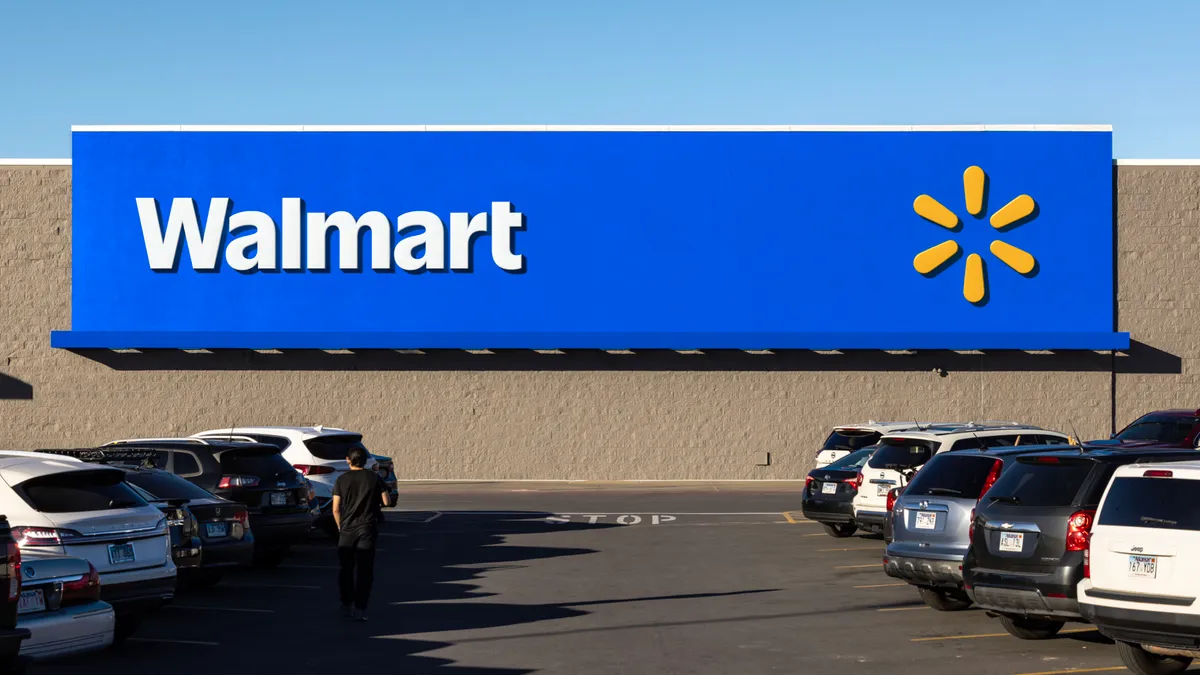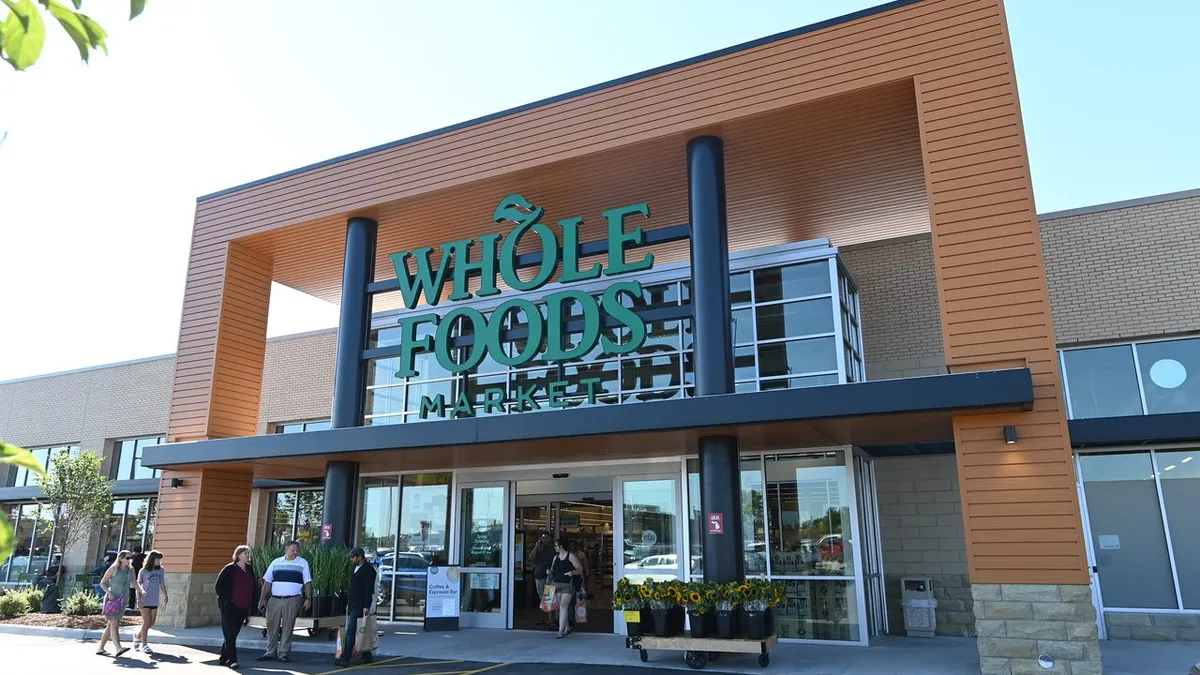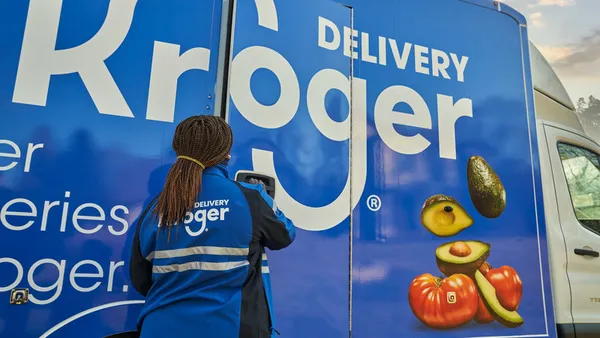Dive Brief:
- Walmart’s U.S. comparable-store sales excluding fuel rose 4.6% during the fourth quarter of fiscal year 2025, driven by transactions and unit volumes as well as share gains from upper-income households, the retailer reported Thursday morning.
- The retailer’s U.S. grocery segment saw mid-single-digit growth and remains a “standout category” for the retailer, CFO John David Rainey told investors during an earnings call Thursday morning.
- E-commerce sales for Walmart U.S. increased by 20%, with over 500 million orders fulfilled by stores.
Dive Insight:
Increased customer transactions both in-store and online fueled Walmart’s comp sales’ continued upward trend during Q4, Walmart President and CEO Doug McMillon told investors during the call.
While the retailer credited grocery as a strong-performing category, Walmart saw high levels of like-for-like inflation primarily attributable to eggs for the second consecutive quarter, according to the company’s earnings presentation. Walmart U.S.’s like-for-like grocery inflation in Q4 was approximately 170 basis points, up from around 100 basis points during the previous quarter.
Growth in the grocery category was driven by increased transactions, units and share gains as well as strong e-commerce growth, per Walmart’s earnings presentation. The retailer also reported broad-based sales strength across food categories, specifically in dairy, fresh meat and produce.
Sales of popular GLP-1 drugs contributed to Walmart U.S.’s mid-teens growth in health and wellness, the company reported. Its recent launch of same-day pharmacy delivery has seen a strong early response, McMillon said.
Walmart saw improved e-commerce profitability during Q4, especially stateside, where the company saw an 80% improvement in the level of e-commerce losses in the last year, Rainey noted.
During the quarter, Walmart expanded same-day delivery from stores to reach 93% of U.S. households, Rainey said. Expedited delivery is proving to be popular, accounting for more than 30% of orders, he added. The company is also growing its fulfillment center capacity, making investments in automation and densifying delivery routes, he said.
“If I could change anything about how we'll proceed today, it’d be that more people know about our breadth of assortment online and our increasing delivery speed,” McMillon said, noting later during the call that the “omnichannel position really is an advantage” as Walmart works to meet customers’ needs through a mix of curbside pickup, in-store shopping and various delivery options.
Looking ahead, Walmart is expecting a “normalized year” with inflation of 1%-2% with some anomalies like eggs, Walmart U.S. President and CEO John Furner said. The company does not have “any explicit assumption” in its guidance around tariffs, Rainey noted.
Walmart executives expressed confidence in the business going forward as it continues to diversify high-revenue parts of its business, including its Walmart+ membership, online marketplace and advertising. Advertising and membership combined accounted for a little more than a quarter of the company’s overall operating income in Q4, Rainey said.
“The way we've designed and grown our evolving business model with more diversified and durable sources of profit like advertising and membership has enabled us to grow operating income faster than sales,” Rainey said.
Correction: A previous version of this story misstated Walmart's like-for-like grocery inflation in Q3.













